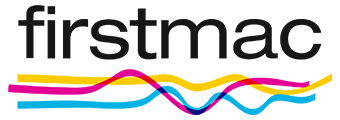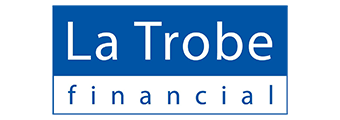Essentially, the whole point of an SMSF is to give you greater freedom to set yourself up for retirement. When you get older, you’ll finally be able to get your hands on the money in your SMSF and start splurging. However, like many things SMSF-related, the process for paying a pension out of the account can be complex and cumbersome.
Advertisement
Looking to take control of your retirement? This table below features SMSF loans with some of the most competitive interest rates on the market.
| Lender | Home Loan | Interest Rate | Comparison Rate* | Monthly Repayment | Repayment type | Rate Type | Offset | Redraw | Ongoing Fees | Upfront Fees | Max LVR | Lump Sum Repayment | Extra Repayments | Split Loan Option | Tags | Features | Link | Compare | Promoted Product | Disclosure |
|---|---|---|---|---|---|---|---|---|---|---|---|---|---|---|---|---|---|---|---|---|
6.49% p.a. | 6.51% p.a. | $3,157 | Principal & Interest | Variable | $null | $230 | 70% |
| Promoted | Disclosure | ||||||||||
6.74% p.a. | 6.79% p.a. | $3,240 | Principal & Interest | Variable | $0 | $220 | 70% | Disclosure | ||||||||||||
6.75% p.a. | 7.16% p.a. | $3,243 | Principal & Interest | Variable | $30 | $null | 80% | |||||||||||||
6.59% p.a. | – | $3,190 | Principal & Interest | Variable | $0 | $995 | 80% | |||||||||||||
7.00% p.a. | 7.39% p.a. | $3,327 | Principal & Interest | Variable | $0 | $445 | 60% | |||||||||||||
7.24% p.a. | 7.29% p.a. | $3,407 | Principal & Interest | Variable | $0 | $221 | 80% | Disclosure | ||||||||||||
6.59% p.a. | 7.15% p.a. | $3,190 | Principal & Interest | Variable | $395 | $null | 60% | |||||||||||||
6.99% p.a. | 7.01% p.a. | $3,323 | Principal & Interest | Variable | $0 | $230 | 80% |
| Promoted | Disclosure |
What phases of an SMSF are there?
It’s important to understand the different phases of an SMSF to understand how paying a pension out of one works. There are two superannuation phases:
Accumulation phase
The accumulation phase of superannuation is the first phase of your account and will typically be the longest unless you live long past 100. The accumulation phase refers to when you’re making contributions to your super, hence your balance is accumulating. You can’t touch any of the money in your super while it’s accumulating, as you haven’t reached retirement age.
Retirement phase
The second and final phase of superannuation is the retirement phase. At this stage, you can access your super, to pay yourself a pension for example. In fact, the retirement phase was previously called the pension phase to reflect this, but this was changed in 2017.
It’s important to note your super can be in the accumulation phase and retirement phase at the same time. Essentially one segment of the super will be accumulating, while you’re accessing the remaining super through your pension (the retirement phase).
When can I access my SMSF pension?
The money in your SMSF is locked away to force you to save for your retirement and as a result, you can’t usually touch it until you reach a certain age and retire. This age is referred to as your ‘preservation age’. You can find the preservation age pertinent to you based on when you were born in the table below.
|
Date of birth |
Preservation age |
|---|---|
|
Before 1 July 1960 |
55 |
|
1 July 1960 - 30 June 1961 |
56 |
|
1 July 1961 - 30 June 1962 |
57 |
|
1 July 1962 - 30 June 1963 |
58 |
|
1 July 1963 - 30 June 1964 |
59 |
|
From 1 July 1964 |
60 |
Source: ATO.
There are actually a range of allowances for accessing your SMSF pension, including:
-
Reaching your preservation age and starting a transition to retirement pension
-
Reaching 65 years old, even if you haven’t retired
-
Permanent physical or mental incapacity
-
Terminal illness
What types of SMSF pensions are there?
There are two types of SMSF pension, based on your employment status:
Transition to retirement pension
A transition to retirement pension (TRIS) is a pension paid from an SMSF that allows you to continue working. To commence a TRIS, you must have reached your preservation age. When receiving a TRIS the SMSF must pay out a minimum amount per year based on the amount of entitlement you have in the account, and also can’t pay out more than 10% of your assets in a year. The main advantage of a TRIS is you get to continue earning an income while taking advantage of retirement benefits.
Previously, a great advantage of a TRIS was you paid no SMSF tax on income and capital gains, when in the non-retirement phase (before 65 years old). However, this was changed in 2017 so you are now charged 15% tax on these earnings. When you reach the retirement phase (above 65 years old), these payments remain tax-free.
Account-based pension
An account-based pension is a pension paid from an SMSF when you reach preservation age and retired or are aged over 65. It’s a way of receiving your SMSF funds as an income, rather than a lump sum. There are many tax benefits associated with an account-based pension, which means the following things are tax-free:
-
SMSF income
-
SMSF capital gains on assets owned for less than or longer than 12 months
-
Personal tax on pension withdrawals
However, from 1 July 2017, the Transfer Balance Cap means you can only transfer up to $1.6 million into the retirement phase account allowing you to take advantage of these tax breaks. Amounts outside of this will be taxed at 15%.
Minimum pension payout requirements
You’re required to pay out a minimum pension amount each year based on your age and amount of assets. The Federal Government temporarily halved these minimum amounts in recent financial years to prevent pensioners' assets from being massacred through the COVID-induced downturn in the stockmarket. You can find the minimum pension payout amounts in the table below:
|
Age of pensioner |
Temporary minimum pension percentage payout (2019-'21/22) |
Normal minimum pension percentage payout (2013-'18/19) |
|---|---|---|
|
Under 65 |
2% |
4% |
|
65 to 74 |
2.5% |
5% |
|
75 to 79 |
3% |
6% |
|
80 to 84 |
3.5% |
7% |
|
85 to 89 |
4.5% |
9% |
|
90 to 94 |
5.5% |
11% |
|
95 or older |
7% |
14% |
Source: ATO.
What’s the process of starting an SMSF pension?
If you’re looking at starting an SMSF pension, the process will typically look something like this:
Notify trustees
You’re required to notify the other members of your SMSF (if there are any) in writing of your intention to start accessing your pension. The document should include the date you plan to start receiving payments, frequency of payments, where the payments should be directed, and how much the payments should be.
Review the trust deed
You and any other members should review the trust deed to see whether it sets out any specific requirements with regard to paying out a pension. It may have certain processes or restrictions in place and these must be adhered to in order for the SMSF to be compliant.
Review member entitlements
To understand the minimum pension percentage required to be paid out each year, you’ll need to find out what you’re entitled to in the SMSF. This will require you to get a valuation of all the assets in the fund.
Segregated vs unsegregated
If your SMSF is split into the retirement phase and accumulation phase, you’ll be required to decide whether to segregate or unsegregate the assets in the fund. If you decide the assets need to be unsegregated, you’ll need to get an actuarial certificate annually to figure out tax obligations.
Review investment strategy
The trust deed will set out the investment strategy of the SMSF. You’ll need to review the investment strategy to ensure you can still achieve what it sets out while still accessing a pension. You may need to alter the contents of the fund to bring it into line with what is set out, while still following the rule of providing for members' retirement.
Review tax obligations
SMSFs are a tax minefield and bringing a pension into the mix can complicate things further. There are numerous tax benefits associated with the move but consider seeing an accountant or tax specialist to ensure you’re doing everything by the book.
Determine pension payments
Once you’ve valued the assets in the fund you can figure out the minimum pension payments and ensure the pension payments requested are greater than this. From here, you need to keep reviewing assets, pension payments, and the frequency of these to ensure everything is in order.
Photo by Chrisitian Wiediger on Unsplash







